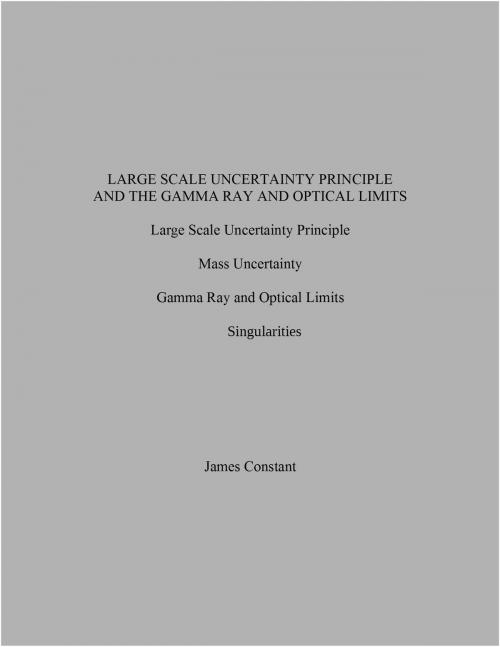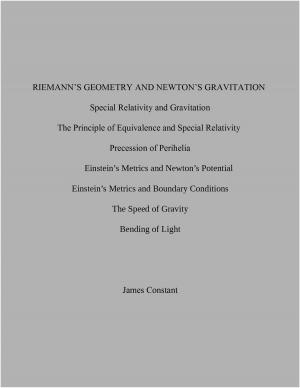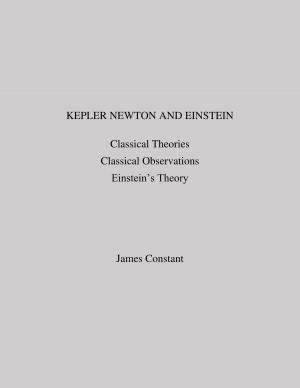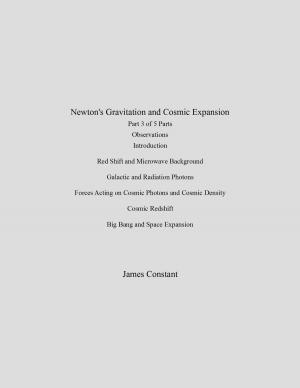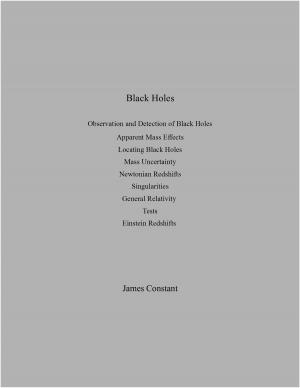Large Scale Uncertainty Principle and the Gamma Ray and Optical Limits
Nonfiction, Science & Nature, Science, Physics, Gravity| Author: | James Constant | ISBN: | 9781311265692 |
| Publisher: | James Constant | Publication: | January 12, 2015 |
| Imprint: | Smashwords Edition | Language: | English |
| Author: | James Constant |
| ISBN: | 9781311265692 |
| Publisher: | James Constant |
| Publication: | January 12, 2015 |
| Imprint: | Smashwords Edition |
| Language: | English |
Until the statement of the small scale uncertainty principle by Heisenberg in 1927, modern physics held to the idea of a classical determinism, and the rejection of such determinism became a cause for dissent between Einstein (as a believer in a classical determinism) and Bohr and the other supporters of the quantum revolution. On the scale of atoms and elementary particles the effect of the uncertainty principle is very important. Because of the uncertainties existing at this level, a picture of the sub-microscopic world emerges as one of statistical probabilities rather than measurable certainties. [ref_1] The early founders of quantum mechanics believed that the following energy-time uncertainty relation holds ΔEΔt≥ħ which says that a state which has an accurate energy (time) has an inaccurate time (energy). “In order to have a definite energy, the frequency of the state needs to be accurately defined, and this requires the state to hang around for many cycles, the reciprocal of the required accuracy. The time Δt in the uncertainty relation is the time during which the system exists unperturbed, not the time during which the experimental equipment is turned on.”.[ref_2]
On a large scale it is still possible to speak of causality in a framework described in terms of space and time; on the atomic scale this is not possible. Such a description would require exact measurements of such quantities as frequency, distance, time, energy, momentum, and these quantities cannot be measured exactly because of the detector or source uncertainties. Here, restrictions do not limit the accuracy of single measurements, of non-simultaneous measurements, or of simultaneous measurements of pairs of quantities. Even so, there are restrictions sufficient to prevent scientists from being able to make absolute predictions about future states of the system being studied. On this page, I discuss restrictions due to source uncertainties, photon limits and singularities.
Until the statement of the small scale uncertainty principle by Heisenberg in 1927, modern physics held to the idea of a classical determinism, and the rejection of such determinism became a cause for dissent between Einstein (as a believer in a classical determinism) and Bohr and the other supporters of the quantum revolution. On the scale of atoms and elementary particles the effect of the uncertainty principle is very important. Because of the uncertainties existing at this level, a picture of the sub-microscopic world emerges as one of statistical probabilities rather than measurable certainties. [ref_1] The early founders of quantum mechanics believed that the following energy-time uncertainty relation holds ΔEΔt≥ħ which says that a state which has an accurate energy (time) has an inaccurate time (energy). “In order to have a definite energy, the frequency of the state needs to be accurately defined, and this requires the state to hang around for many cycles, the reciprocal of the required accuracy. The time Δt in the uncertainty relation is the time during which the system exists unperturbed, not the time during which the experimental equipment is turned on.”.[ref_2]
On a large scale it is still possible to speak of causality in a framework described in terms of space and time; on the atomic scale this is not possible. Such a description would require exact measurements of such quantities as frequency, distance, time, energy, momentum, and these quantities cannot be measured exactly because of the detector or source uncertainties. Here, restrictions do not limit the accuracy of single measurements, of non-simultaneous measurements, or of simultaneous measurements of pairs of quantities. Even so, there are restrictions sufficient to prevent scientists from being able to make absolute predictions about future states of the system being studied. On this page, I discuss restrictions due to source uncertainties, photon limits and singularities.
